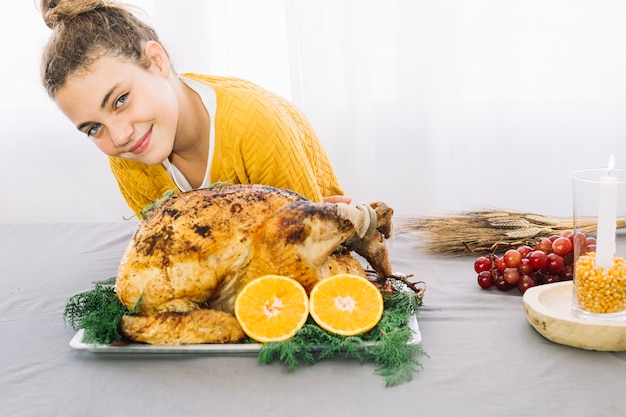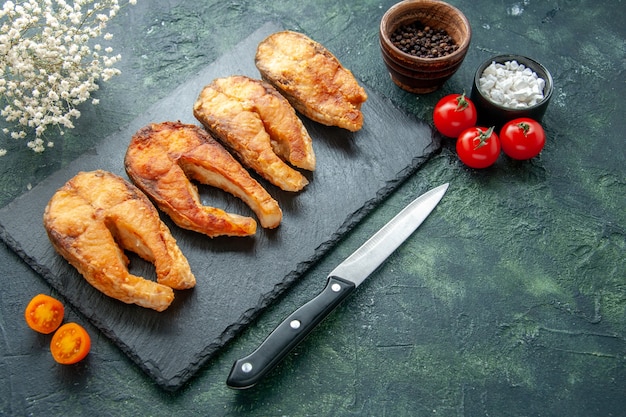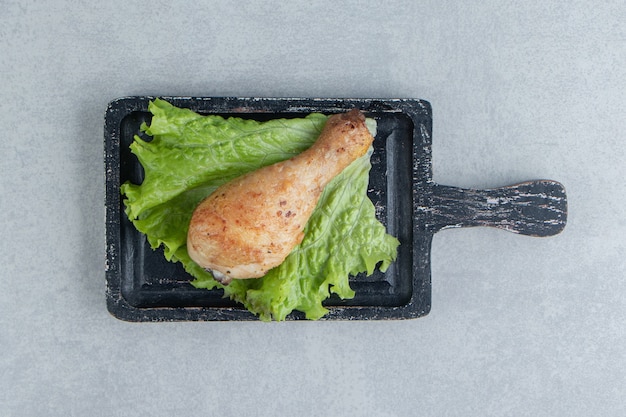chicken breasts! The culinary chameleon. They're a staple in our kitchens, versatile enough for a quick weeknight dinner or a fancy gourmet meal. But, let's be honest, cooking chicken breasts to perfection can be a bit of a culinary tightrope walk. One moment you're dreaming of juicy, tender bites, the next you're staring down a dry, rubbery disappointment. As a seasoned cook who's tackled my fair share of chicken breast mishaps, I've learned a thing or two about getting them right. So, grab your spatula and join me on this culinary adventure as we unravel the secrets to achieving chicken breast perfection – from raw to juicy in minutes!
Part 1: Unveiling the Science of the perfect chicken Breast

Before we dive into those tempting cook times, let's peek behind the curtain and understand the science driving a perfect chicken breast. It all boils down to the proteins within the meat, those tiny little building blocks that give chicken its structure. When you introduce heat, those proteins start to tighten up, pulling together and squeezing out moisture. Think of it like a tiny party where the proteins are the guests, getting a little too excited and pushing each other around, spilling their drinks (moisture) in the process. The longer the party goes on (the longer you cook), the more the proteins tighten up, resulting in a drier, more rubbery texture.
The Crucial Role of Protein Denaturation
Here’s the key concept: protein denaturation. It's the fancy scientific term for what happens when those proteins change their shape due to heat. This process is what transforms a raw, soft piece of chicken into a firm, cooked piece. But, if you cook it too long, the proteins party too hard, squeeze out all the tasty juice, and leave you with a dry, unappealing texture. It's a culinary tightrope walk, my friends.
Temperature: The Thermostat of Chicken Perfection
The temperature at which you cook your chicken breast also plays a crucial role. Imagine a high-heat scenario: It's like a hot oven with the flame blasting away. The outer layers of the chicken cook quickly, while the inside struggles to catch up. It's a recipe for uneven cooking and a dry, tough breast. Now, picture a lower heat setting: It's like a gentle simmer, allowing the heat to gently penetrate the entire breast, creating a more consistently cooked and juicy result. We'll explore these temperature nuances more deeply later on.
Part 2: chicken breast sizes: A Guide to Sizing Up Your Meal

Chicken breasts aren't one-size-fits-all. They come in a range of shapes and sizes, and knowing the size is crucial for determining the perfect cook time. A tiny, thin breast will cook in a flash, while a thick, hefty one will need more time to reach that ideal temperature. So, before you even turn on the stove, take a moment to assess your chicken breasts – it's like a culinary size-up session.
Visual Guide: Sizing Up Your Chicken Breasts
To make it easier, here's a simple visual guide to categorize those chicken breasts:
- Small: Think of a chicken breast that's roughly the size of your palm, like a cute little bird.
- Medium: A breast that's a little bigger than your palm, about the size of a small dinner plate. It's the perfect Goldilocks of chicken breasts – not too big, not too small.
- Large: A breast that's significantly larger than your palm, about the size of a large dinner plate. These are the big boys, the muscle-bound chickens of the poultry world.
Keep this visual guide in mind as you choose your cooking method and timing. It's your secret weapon for chicken breast success.
Part 3: Choosing Your Weapon: Exploring Cooking Methods

There are several ways to cook chicken breast, each with its own strengths and weaknesses. Choosing the right method depends on your preferences, the size of your chicken breast, and the overall dish you're whipping up. Let's explore a few common contenders:
Pan-frying: The Quick and Easy Hero
Pan-frying is the classic go-to for chicken breasts, especially when you're short on time. It delivers that beautiful golden-brown sear on the outside, creating a lovely crust, while the inside cooks through nicely. It's perfect for smaller chicken breasts and works wonders with seasonings and sauces. Think of pan-frying as the quick and easy hero of the chicken breast world.
Baking: The Gentle and Tender Method
Baking is another excellent option, especially for those larger chicken breasts. It provides even cooking, resulting in a moist, tender texture. You can bake chicken breast whole or cut it into smaller pieces, making it versatile for salads, sandwiches, or even casseroles. Baking is the gentle giant of the chicken breast world, delivering consistent results.
Grilling: The Smoky Char-Grilled Sensation
Grilling is the star of the outdoor cooking scene, adding a delicious smoky flavour and that irresistible char to chicken breasts. It's perfect for grilling alongside vegetables or other meats, creating a complete and satisfying meal. However, grilling can be a little more temperamental than other methods, so it's best for cooks who are a little more experienced. Grilling is the adventurous char-grilled sensation of the chicken breast world, adding a touch of smoky allure.
Boiling: The Simple and Versatile Choice
Boiling is the ultimate low-key method, perfect for those times when simplicity reigns supreme. It's great for preparing chicken for salads, soups, or dishes where you don't need a crispy exterior. However, boiling can sometimes leave the chicken a bit bland, so remember to season generously. Boiling is the reliable and versatile choice of the chicken breast world, perfect for when you need a basic, flavorful base.
Part 4: Temperature: The Key to Unlocking Juicy Perfection
Now, let's talk temperature, the heart of the matter when it comes to cooking chicken breasts. The magic number is 165°F (74°C). This ensures that the chicken is thoroughly cooked through, safe to eat, and free from any lingering pinkness. Don't fear the thermometer, it's your culinary sidekick, your trusty guide to chicken breast perfection.
Temperature Guide: Your Chicken Breast Compass
Here's a quick guide to understand different temperature ranges and their impact on your chicken breast:
| Temperature (°F) | Temperature (°C) | Result |
|---|---|---|
| 145°F (63°C) | Slightly pink, but safe to eat (for some) | |
| 165°F (74°C) | Cooked through, no pinkness, safe for everyone | |
| 180°F (82°C) | Overcooked, dry and rubbery, a culinary faux pas |
Remember, these temperatures are for whole chicken breasts. Smaller pieces or chicken cutlets will cook faster, so adjust your cooking times accordingly. And always, always, always use a meat thermometer to ensure your chicken is cooked to the perfect temperature. It's your culinary insurance policy for safe and delicious eating.
Part 5: Mastering the Perfect Chicken Breast Cook Times
Now, let's finally dive into the heart of this article: the perfect cook times for chicken breasts. Remember, these are just guidelines, and cooking times will vary depending on the size, thickness, and cooking method. Always check the internal temperature of your chicken to ensure it's cooked through.
Cook Times for Pan-frying: A Quick Sizzle to Perfection
Pan-frying is a popular and quick method for cooking chicken breasts. Here are some estimated cook times for pan-frying, assuming a medium heat:
- Small: 3-5 minutes per side
- Medium: 5-7 minutes per side
- Large: 7-10 minutes per side
Remember to reduce the heat if the chicken is browning too quickly, and always check the internal temperature to ensure it's cooked through. You want that beautiful golden-brown crust, not a burnt offering.
Cook Times for Baking: The Gentle Heat of the Oven
Baking is a good option for larger chicken breasts, allowing for even cooking. Here are some estimated cook times for baking, assuming an oven temperature of 375°F (190°C):
- Small: 15-20 minutes
- Medium: 20-25 minutes
- Large: 25-30 minutes
Again, these are estimates, and you should always check the internal temperature of your chicken to ensure it's cooked through. Baking is a forgiving method, but don't let it lull you into a false sense of security!
Cook Times for Grilling: The Smoky Dance Over Fire
Grilling adds a smoky flavour and char to chicken breasts. Here are some estimated cook times for grilling, assuming a medium heat:
- Small: 4-6 minutes per side
- Medium: 6-8 minutes per side
- Large: 8-10 minutes per side
Be careful not to overcook the chicken, and always check the internal temperature to ensure it's cooked through. Grilling is a game of timing and precision, so keep an eye on those flames!
Part 6: My Personal Tips for juicy chicken Breast Success
Over the years, I've gathered a few tips that have helped me consistently achieve juicy, tender chicken breasts. They might seem simple, but they can make a world of difference, transforming those dry, tough chicken breasts into culinary masterpieces.
Brining: Unlocking Moisture from the Inside Out
Brining is the secret weapon for adding moisture to chicken breasts. It involves soaking the chicken in a salt-water solution for several hours. The salt draws moisture into the chicken, resulting in a more tender and juicy texture. It's a bit of a time commitment, but the results are truly transformative. Imagine a chicken breast that's bursting with juicy goodness – that's the power of brining.
Don't Overcook! The Culinary Golden Rule
This might sound obvious, but it's easy to overcook chicken, especially when using high heat. Overcooked chicken is dry, tough, and frankly, unpleasant to eat. Always check the internal temperature to ensure it's cooked through but not overcooked. For a juicier result, aim for an internal temperature of 160°F (71°C) instead of 165°F (74°C). It's a subtle difference, but it can make a big impact on the final texture.
Resting: Giving the Juices a Chance to Redistribute
After you remove your chicken from the heat, let it rest for a few minutes before slicing. This allows the juices to redistribute throughout the meat, resulting in a more tender and moist texture. Just cover the chicken loosely with foil and let it rest for about 5-10 minutes. It's a simple step with big rewards.
Part 7: Using a Meat Thermometer: The Ultimate Guide to chicken safety
As I've emphasized throughout this article, using a meat thermometer is non-negotiable for ensuring your chicken is cooked to the correct temperature and safe to eat. It's your culinary compass, guiding you towards safe and delicious chicken breasts.
Choosing Your Culinary Sidekick: Selecting the Right Thermometer
There are various types of meat thermometers available, including digital, analog, and instant-read. I personally prefer a digital thermometer, as they're accurate, user-friendly, and provide a clear reading. Choose a thermometer that's calibrated to read in Fahrenheit or Celsius, depending on your preference. It's your culinary sidekick, so choose one that you trust.
Properly Inserting the Thermometer: A Culinary Dance of Precision
When using a meat thermometer, correct insertion is crucial. Aim for the thickest part of the chicken breast, making sure the tip is fully submerged in the meat. Avoid touching any bone, as this can give you an inaccurate reading. It's a delicate dance of precision, ensuring you get an accurate reading for optimal results.
Reading the Temperature: Interpreting the Culinary Signals
Once you've inserted the thermometer, wait a few seconds for the reading to stabilize. The temperature should reach 165°F (74°C) for a safe and fully cooked chicken breast. If the temperature is lower, continue cooking until it reaches the desired temperature. If the temperature is higher, you've likely overcooked the chicken. It's a game of careful observation, interpreting the signals your thermometer is sending.
Part 8: FAQs: Common Questions About Chicken Breast
Here are some common questions about cooking chicken breasts, and my answers based on my experience, seasoned with a dash of culinary wisdom.
1. What if my chicken breast is still pink after cooking?
Don't panic! A slight pinkness can sometimes remain, even if the chicken is cooked through. The colour of chicken can be affected by various factors, including its age and breed. If the internal temperature has reached 165°F (74°C), it's safe to eat. However, if the chicken is still pink in multiple places, it's best to cook it for a few minutes longer. It's better to be safe than sorry when it comes to food safety.
2. How do I know if my chicken breast is overcooked?
overcooked chicken breast will have a dry, rubbery texture and a pale, sometimes grey colour. The meat will be tough to chew and may have an unpleasant flavour. If you suspect your chicken is overcooked, there's not much you can do to recover it. It's best to throw it away and try again with a new breast. It's a lesson learned, and a reminder that chicken breasts are best treated with respect and care.
3. Can I cook frozen chicken breast?
Yes, you can cook frozen chicken breast, but you'll need to adjust the cooking time. I generally recommend thawing the chicken completely before cooking for optimal results. If you're in a hurry, you can cook it frozen, but it will take longer and may result in uneven cooking. It's best to plan ahead and give your chicken time to thaw for the best possible outcome.
4. Can I reuse leftover cooked chicken breast?
Absolutely! Cooked chicken breast is a culinary chameleon, a versatile base for a variety of dishes. You can use it for salads, sandwiches, soups, and more. Just make sure you store it properly in the refrigerator or freezer to prevent spoilage. Generally, cooked chicken can last in the refrigerator for 3-4 days and in the freezer for 2-3 months. So, don't let that leftover chicken go to waste, unleash its culinary potential!
5. Can I make chicken breast ahead of time?
Yes, you can cook chicken breast ahead of time and reheat it later. This is a great way to save time during busy weeks. I recommend cooking the chicken breast to 165°F (74°C) and then storing it in the refrigerator or freezer. To reheat, you can use the oven, stovetop, or microwave. Just make sure the chicken is heated through to 165°F (74°C) before serving. It's a fantastic time-saving strategy for busy weeknights.
Conclusion: Mastering the Art of Chicken Breast Perfection
And there you have it – a comprehensive guide to mastering the perfect chicken breast cook times, from raw to juicy in minutes. Remember, it's all about understanding the science behind cooking, choosing the right method, paying attention to temperature, and mastering a few key tips. Don't be afraid to experiment and find what works best for you. With a little practice and a dash of culinary confidence, you'll be serving up delicious, juicy chicken breasts in no time. Bon appetit!
Everyone is watching

Corn on the Cob: The Ultimate Guide to Perfectly Cooked Ears
Healthy MealsAh, corn on the cob. Just the name evokes images of sunny days, barbecues, and that sweet, juicy flavour that ...

Perfect Pork Roast Oven Cooking Time: A Guide to Delicious Results
Healthy MealsThere's something truly satisfying about a perfectly roasted pork. The aroma alone is enough to make your mout...

Ham Cooking Time: How Long to Bake, Smoke, or Boil a Delicious Ham
Healthy MealsAh, ham. It's a classic, isn't it? A real crowd-pleaser, especially around holidays. And when done right, it'...

Scallops: The Ultimate Guide to Perfect Cooking
Healthy MealsAh, scallops. Those delicate, sweet, and utterly delicious morsels of the sea. They hold a special place in my...

Spaghetti Squash: The Ultimate Guide to Cooking and Serving
Healthy MealsRemember that time you saw spaghetti squash at the supermarket, looking all bumpy and strange, and thought, "W...
